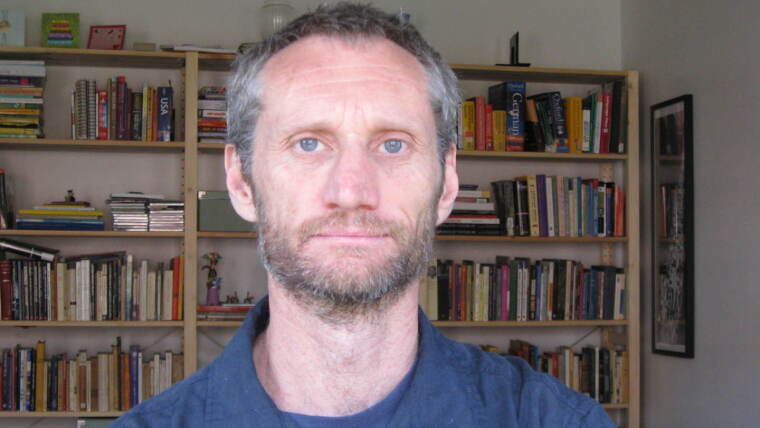
Prof. Dr. Richard MILDREN
Image: PrivateRichard Mildren (Australian Research Council Future Fellow 2010-2014) is a Professor in the Department of Physics and AstronomyExternal link. His research is in the development of novel and versatile photonic sources, instrumentation and applications. His PhD and early postdoctoral research was in the plasma kinetics of high power metal vapour lasers. Richard Mildren has studied ultrafast lasers at the National Research Council in Pisa, Italy. For 3 years (2005-2008) he led R&D for a University spin-off company in wavelength-switchable medical lasers, during which time he brought several medical laser products through to the stage of medical device regulatory approval. His most recent focus, conducted in the MQ Photonics Research CentreExternal link, is in the nonlinear optical phenomena in advanced optical materials including in synthetic diamond. Latest research results and news can be found on the Diamond Laser Group websiteExternal link.
Lecture 1: Commercialization Challenges in Diamond Laser Research
Time: September 20, 2018, 11:00
Place: DokDok conference, Ahorn Berghotel, 99894 Friedrichroda
Rich Mildren will give this talk as a keynote lecture at this year's DokDok conference.
Lecture 2: Diamond – the Good, the Bad and the Ugly
Time: September 25, 2018, 10:00
Place: Fraunhofer IOF, Carl-Zeiss-Saal, Albert-Einstein-Str. 7, 07745 Jena
Diamond’s extreme properties are well known in many contexts, however, it also has an array of unusual optical and related properties that present substantial opportunities in optics. Some of these are surprising good while others not. This first lecture aims to provide a brief evaluation overview of its vast set of material properties, as a basis for understanding the future optical opportunities for this increasingly available material. As well as Kerr, Raman and Brillouin nonlinearities, I will aim to also touch on diamond’s potential in RF photonics, electro-optics and high power linear optical elements. This overview will set the scene for the next lecture on lasers and amplifiers based on stimulated scattering, an area that simultaneously exploits several of its more outstanding properties.
Lecture 3: Diamond Raman Lasers and Amplifiers – Status and Future
Time: October 5, 2018, 10:00
Place: ACP auditorium, Albert-Einstein-Str. 6, 07745 Jena
Raman lasers have often been perceived as a nonlinear conversion technique for wavelength-shifting a pump laser (usually pulsed) with an often-simultaneous benefit of beam cleanup. However, diamond enables this view to be considerably broadened by its extreme properties including a characteristically large Raman shift (40 THz), pure first-order Raman spectrum and the massively improved thermal properties (eg., thermal conductivity of 2000 W/mK). Since the first demonstrations of Raman lasers using synthetic diamond about 10 years ago, there has been rapid progress in using diamond lasers power output of Raman lasers in temporal regimes spanning the ultrafast to cw. Compared to other Raman crystals, This lecture reviews the progress so far and highlights the directions in laser and nonlinear optics where it is well placed to make a substantial impact. Amongst a range of interesting advantages, its capacity for very high average power (> kW), diamond-based techniques for beam combination and beam brightness enhancement and high spectral brightness at traditionally difficult regions of the spectrum to access are areas that will be addressed.
Lecture 4: Two-Photon Induced Ejection of Carbon from Diamond Surfaces - a Novel All-Optical Process for Atom Removal and Nanostructuring
Time: October 23, 2018, 10:00
Place: Fraunhofer IOF, Carl-Zeiss-Saal, Albert-Einstein-Str. 7, 07745 Jena
As first observed by the Konov group at the Prokhorov Institute (Moscow), exposure of diamond surfaces to ultraviolet light leads to carbon atom ejection from the surface. This is a cold non-ablative process showing 2-photon dependence that provides a novel method for rapid surface nano-patterning and machining, including the ability to removing single or partial atom layers. This lecture compares and contrasts this curious and poorly understood phenomenon against our knowledge of laser ablation, nonlinear photo-dissociation and photo-selective surface desorption. Characterization of the polarization dependence of etched patterns provides evidence for bond-selective scission and ejection of carbon species from the surface which has fundamental significance for atom-scale surface manipulation of diamond as well as possibly other covalently bonded materials.
